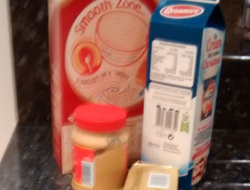Food Packaging: Convenience at a health cost?
Published: July 12, 2019
Food packaging in some form or other has been around for centuries.
Materials used for food packaging include cloth (muslin and cotton), leather, wax, grass, hay, paper, glass, polystyrene, styrofoam, cardboard, ceramic pottery, metal (such as aluminum), and various plastics.
Plastics are possibly the most versatile material ranging from very flexible to very rigid and for the most part unbreakable.
Food packaging has a variety of functions such as:
- Protecting food from physical damage such as shock, vibration, compression, temperature, bacteria, and rodents
- Food preservation: preservation of nutrients and extension of shelf life by keeping food fresh and clean and controlling oxygen and water content
- Containers for liquids, powders, gels and granular foods
- Food safety: tamper proof seals and authentication seals and may include anti theft devices such as dye packs, and electronic tags which need to be deactivated
- Provision of information about food contents, use of content, transport, recycling/disposal information required by government
- Marketing: advertising of product graphic design, and communications
- Convenience: distribution, handling, stacking, display, sale, opening, reclosing, use and reuse
- Portion control: single serving packaging precise amount to control usage, bulk commodities may be divided into smaller sizes
There are several types of food packaging use for processed foods: primary, secondary and tertiary packaging.
Primary packaging
Primary packaging refers to the packaging that holds the food item. There are several types of primary food packages.
The food processing process results in a sterile food product which must be kept sterile until used by the consumer.
Packaging for sterile food is referred to as aseptic packing and was first introduced in Switzerland in 1961 where it was initially primarily used for packaging milk. Aseptic food packaging appeared in the US in the 1980s and is usually a combination of approximately 70% paper, 24 % polyethylene and 6% aluminum.
The polyethylene layer is the innermost layer and forms a tight seal which forms a barrier against microbial organisms and contaminants. This barrier reduces the risk of degradation as well as the need for refrigeration of some products.
Dairy products, liquid whole eggs and juice are often packaged in aseptic packaging, e.g. tetra juice boxes and other cartons.
Other types of primary packaging include...link to the full article to learn more.
References
1.
Peach, S. (2011). Bisphenol A Is Ubiquitous In Receipts Endocrine Disrupters: Researchers detect BPA in every receipt that they collected from seven U.S. cities. Environmental Science and technology, 89, 23 | pp. 14-19
2.
Ritter, S.K. Debating BPA’s Toxicity:The precautionary principle serves as a dividing line in arguments over the safety of bisphenol A
3.
Liao, C and Kannan, K. (2011). Widespread Occurrence of Bisphenol A in Paper and Paper Products: Implications for Human Exposure. Environ. Sci. Technol. 45, 9372–9379
4.
Lakind, J.S. and Naiman, D.Q. (2008). Bisphenol A (BPA) daily intakes in the United States: Estimates from the 2003-2004 NHANES urinary BPA data. Journal of Exposure Science and Environmental Epidemiology. 18, 608-615
5.
Centre for Science in the Public Interest: April 2008, January/February 2012, June 2012
6.
Wikipedia: Food packaging https://en.wikipedia.org/wiki/Food_packaging

